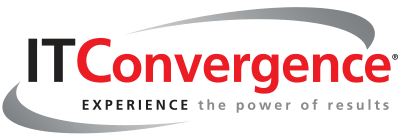Enterprises today face growing pressure to extract meaningful value from their data while keeping pace with the rapid evolution of AI. Oracle’s AI Data Platform addresses this challenge by uniting enterprise data with best-in-class AI models and developer tools. The result: organizations can drive smarter insights, faster innovation, and more informed decision-making by transforming data into actionable intelligence.
Key Takeaways
|
Why Oracle AI Data Platform?
Modern enterprises often grapple with fragmented systems, siloed data, and complex AI toolchains. Oracle AI Data Platform solves these challenges by offering:
- Unified Data and AI Governance – Manage both data and AI assets confidently under consistent policies.
- High-Performance Processing at Scale – Handle massive data volumes and complex AI workloads with ease.
- Seamless Integration with Oracle’s Business Ecosystem – Embed AI directly into SaaS applications and industry solutions.
These capabilities position the platform as a foundation for driving enterprise AI from experimentation to production.
Oracle AI Data Platform – Key Capabilities
AI Agents and Applications
Oracle enhances AI application development through flexibility and integration:
- Low-Code & Code-First Flexibility – Build AI agents and applications using visual interfaces or notebooks.
- OCI Generative AI + Oracle 23ai Integration – Access state-of-the-art LLMs and AI services directly within the platform.
- Vector Store with ADB 23ai – Store, manage, and query enterprise knowledge with vector search linked to a master catalog.
- Full Lifecycle Management – Register, version, test, and promote AI agents with comprehensive governance.
- Fusion AI Agent Studio Integration – Embed AI agents directly into Oracle SaaS apps like Fusion Cloud to drive intelligent business processes.
This combination allows enterprises to move rapidly from prototyping to fully operational AI solutions.
Data Engineering and Data Science
The platform simplifies the entire AI and data science workflow:
- Unified IDE – Consolidate data transformation, feature engineering, model training, and MLOps in one environment.
- Flexible Compute – Run workloads on Spark or Autonomous Database (ADB) depending on performance and cost requirements.
- Multi-Language Support – Build workflows in Python, SQL, or Java.
- Unified Orchestration – Schedule and manage both batch and streaming jobs.
- Git Integration – Collaborate effectively with version control for both data and AI projects.
By reducing complexity, Oracle accelerates the path from raw data to deployed AI models.
Unified Catalog, Governance, and Lineage
Trust is crucial for enterprise AI. Oracle ensures data and AI assets are secure, discoverable, and organized:
- Centralized Master Catalog – Manage structured, semi-structured, and unstructured data alongside AI artifacts.
- Medallion Architecture Support – Natively manage bronze, silver, and gold data layers with full lineage tracking.
- Multi-Format Support – Ingest and analyze files, databases, documents, images, and more.
- Built-In Governance – Apply consistent access policies across all data and AI assets.
This ensures a balance between data compliance, access, and innovation.
Data Integration at Enterprise Scale
AI is only as good as the data it learns from. Oracle offers deep connectivity across sources and ecosystems:
- Open Connectivity – Connect to external systems via REST, JDBC, or using Kafka.
- Flexible Access – Work with live data or ingest it into the Lakehouse.
- Deep Oracle Integration – Orchestrate data and AI with ADB, GoldenGate, HeatWave, and Oracle Analytics Cloud.
- Native Oracle App Connectivity – Access operational data from Fusion Apps, EBS, Health, and industry solutions.
- One-Click Data Sharing – Bring curated application data into the catalog via FDI/HDI.
Organizations gain a 360° view of enterprise data, powering more accurate and actionable AI insights.
Managed Integration with Open Source
Oracle extends and manages open-source technologies for a reliable, enterprise-ready experience:
- Apache Spark – Scalable, distributed data processing.
- Delta Lake – ACID transactions, schema evolution, and enhanced data reliability.
- Iceberg & Hudi via Delta Uniform – Interoperability across storage formats for a unified table strategy.
- JDBC Integration for BI Tools – Connect seamlessly to Oracle Analytics Cloud (OAC) and third-party BI tools.
Top Features of Oracle AI Data Platform
Oracle AI Data Platform supports a wide range of business and technical scenarios:
- Medallion Architecture – Efficient storage, query optimization, and zero-copy access to external data sources.
- ETL & Data Engineering – Low-code/no-code workflow orchestration for batch and real-time processing.
- Machine Learning & AI – Train, deploy, and scale ML models; manage feature engineering in Python and PySpark.
- Enterprise Data Catalog & Governance – Centralized metadata, Role-Based Access Control (RBAC) for secure collaboration, and Delta Sharing for governed data exchange.
- Analytics & Visualization – Connect to Oracle Analytics Cloud or third-party tools like Tableau and Power BI.
- Multi-Cloud & Hybrid Integration – Federated queries across clouds and on-premises systems while maintaining compliance.
Conclusion
Oracle AI Data Platform goes beyond just infrastructure and builds a foundation for the next generation of enterprise AI. By unifying data, governance, and AI development in a single platform, it enables businesses to scale their AI initiatives, build a faster path from idea to production, and embed intelligence directly into the applications that run their business. It provides a unified, future-ready solution for enterprises seeking to harness AI without the complexity of fragmented tools and siloed data.
Key Highlights
- What is Oracle AI Data Platform?
It’s a unified platform that combines data management, AI development, and governance—helping enterprises turn data into actionable intelligence. - How does it simplify AI and data management?
By bringing data, AI models, and governance into one environment with consistent policies, full lineage, and centralized control. - What makes it different from other AI platforms?
It integrates seamlessly with Oracle SaaS, databases, and analytics tools, reducing fragmentation and accelerating AI deployment. - Can it connect to non-Oracle systems?
Yes. It supports open standards like REST, JDBC, and Kafka, and works with open-source tools such as Spark, Delta Lake, and Iceberg. - What AI capabilities does it offer?
Low-code and code-first AI app development, OCI Generative AI integration, vector storage, and AI agent embedding in Oracle Fusion Cloud. - How does it help data engineers and scientists?
With a unified IDE for data transformation, model training, orchestration, and Git-based collaboration in Python, SQL, or Java. - What governance features are included?
Centralized catalog, access control, policy management, and full data and AI asset lineage tracking. - What are typical use cases?
ETL, machine learning, data cataloging, analytics, and multi-cloud data integration for unified enterprise insights. - How does it accelerate AI adoption?
By streamlining workflows from data prep to deployment, helping enterprises move from pilot to production quickly. - Who should use it?
Enterprises aiming to scale AI initiatives, modernize data architecture, or embed AI into business processes.




